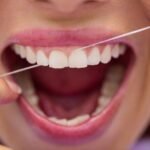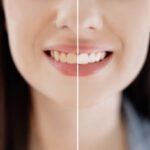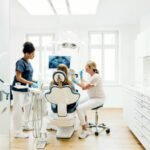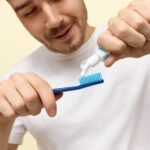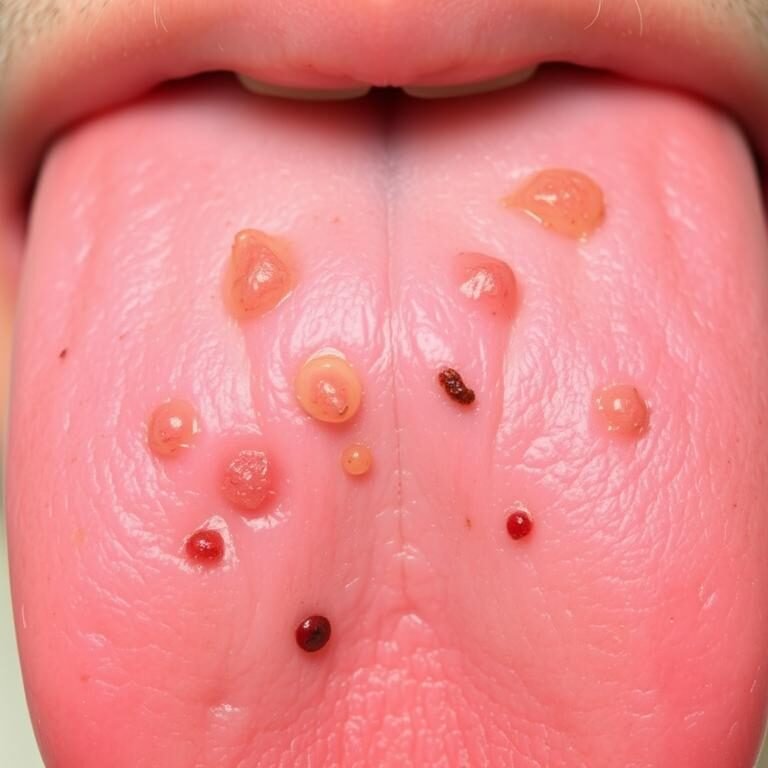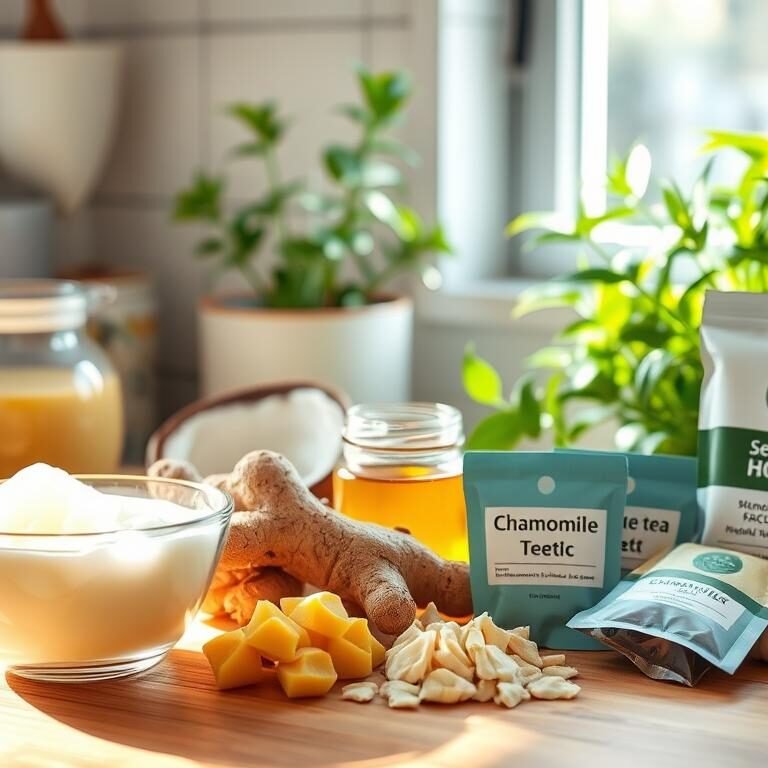Table of Contents
Understanding the importance of proper oral hygiene
Proper oral hygiene is crucial for maintaining a healthy mouth and preventing dental problems. When we neglect our oral health, we open the door to a host of issues such as tooth decay, gum disease, and bad breath. A regular dental hygiene routine, which includes brushing, flossing, and visiting the dentist, plays a significant role in keeping our teeth and gums in excellent condition.
By brushing our teeth twice a day, we remove plaque, food particles, and bacteria that can accumulate on the surface of our teeth. This helps prevent the formation of cavities and reduces the risk of gum disease. It’s essential to choose a toothbrush with soft bristles and the right size head to effectively clean all areas of the mouth. Additionally, proper brushing technique and the use of fluoride toothpaste contribute to optimal oral hygiene. So, let’s dive deeper into how brushing plays a crucial role in maintaining oral health.
The role of brushing in maintaining oral health
Brushing plays a crucial role in maintaining optimal oral health. It is an essential part of daily oral hygiene routine that helps prevent dental issues such as cavities, gum disease, and bad breath. By effectively removing plaque from the teeth and gums, brushing helps in preventing the buildup of harmful bacteria that can lead to dental decay and gum inflammation.
Regular brushing also promotes the health of the surrounding tissues, including the tongue and cheeks, by eliminating food particles and bacteria that can contribute to oral odor and infection. Moreover, proper brushing techniques can stimulate the gums, improving blood circulation and overall gum health. It is important to note that brushing alone is not sufficient to ensure comprehensive oral hygiene, but it is a critical cornerstone in the maintenance of a healthy mouth.

Choosing the right toothbrush for effective cleaning
When it comes to maintaining optimal oral hygiene, choosing the right toothbrush is essential for effective cleaning. With so many options available on the market, selecting the best toothbrush for your needs can seem like a daunting task. However, understanding the key factors to consider can make this decision much easier.
Firstly, it is important to choose a toothbrush with soft bristles. Hard bristles can cause gum irritation and even damage the tooth enamel. Soft bristles, on the other hand, are gentle on both the teeth and gums while effectively removing plaque and debris. Additionally, consider the size and shape of the toothbrush head. A smaller head allows for better maneuverability and easier access to hard-to-reach areas of the mouth. Lastly, ensure that the handle of the toothbrush is comfortable to hold and easy to grip, as this will make brushing more comfortable and efficient.
By investing in a toothbrush that meets these criteria, you can ensure that you are effectively cleaning your teeth and gums while minimizing the risk of any potential damage. Remember, regularly replacing your toothbrush every three to four months or sooner if the bristles become frayed is also crucial for maintaining optimal oral health.
Selecting the appropriate toothpaste for optimal oral hygiene
To ensure optimal oral hygiene, selecting the appropriate toothpaste is essential. The market offers a wide range of toothpaste options, each claiming to target specific dental concerns. As a result, it can be overwhelming to choose the right toothpaste for your individual needs. Fortunately, understanding the key factors to consider can simplify this decision-making process and help you achieve optimal oral health.
First and foremost, it is crucial to select a toothpaste that contains fluoride. According to numerous studies conducted by dental experts, fluoride has proven to be highly effective in preventing tooth decay. It works by strengthening the enamel, the protective outer layer of the teeth, and making it more resistant to acid attacks caused by bacteria and sugary foods. Therefore, be sure to check the packaging for the presence of fluoride and opt for toothpaste that meets the American Dental Association’s (ADA) guidelines for anti-cavity protection.
In addition to fluoride, consider your specific oral health needs when choosing toothpaste. If you suffer from sensitivity, look for toothpaste specifically designed to address this concern. These toothpastes typically contain ingredients such as potassium nitrate or strontium chloride, which help to desensitize the nerves in the teeth. On the other hand, if you struggle with gum inflammation or bleeding, opt for toothpaste that contains antibacterial agents like triclosan or cetylpyridinium chloride, as they can help combat the bacteria responsible for causing gingivitis.
Remember, selecting the appropriate toothpaste is just the first step towards maintaining optimal oral hygiene. It should always be combined with regular brushing, flossing, and routine dental check-ups to ensure long-term dental health. By making an informed decision when it comes to toothpaste selection, you can enhance your oral care routine and enjoy a healthy smile for years to come.
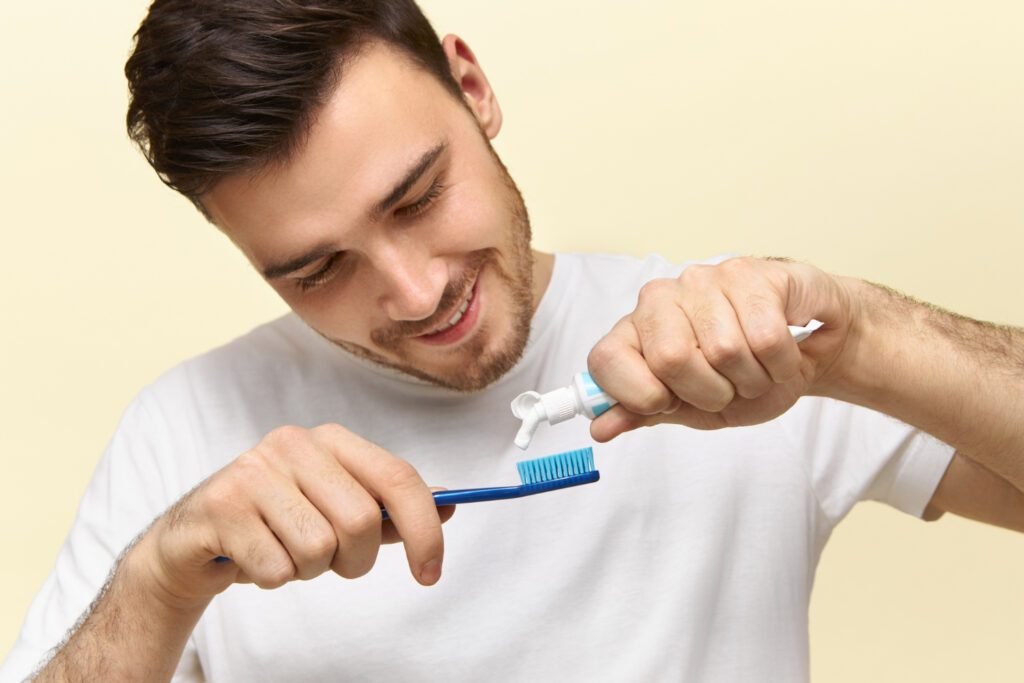
Exploring different brushing techniques for maximum effectiveness
The effectiveness of brushing techniques plays a crucial role in maintaining optimal oral health. A proper brushing technique ensures the removal of plaque and bacteria from the surfaces of the teeth, preventing the development of dental diseases such as cavities and gum disease. While brushing may seem like a simple task, it is important to explore different techniques to maximize its effectiveness.
One technique that is commonly recommended by dental professionals is the modified Bass technique. This technique involves placing the bristles of the toothbrush at a 45-degree angle towards the gumline and making small circular or vibrating motions. This allows the bristles to reach under the gumline, removing plaque and debris that may be hiding in those hard-to-reach areas. It is important to remember to brush all surfaces of the teeth, including the inner surfaces and chewing surfaces, using gentle pressure to avoid causing damage to the gums.
Another effective technique is the Fones technique, which is particularly beneficial for children and individuals with limited dexterity. This technique involves holding the toothbrush in a horizontal position and making large sweeping motions to cover all surfaces of the teeth. The Fones technique is simple and easy to perform, making it a great option for those who may struggle with more complex brushing techniques. Remember, regardless of the technique you choose, it is crucial to brush for at least two minutes, twice a day, to achieve optimal results.
Exploring and experimenting with different brushing techniques can help individuals find the most effective method for their unique oral health needs. By incorporating proper brushing techniques into their daily oral care routine, individuals can ensure the removal of plaque and bacteria, leading to improved oral health and a healthier smile. Remember, consulting with a dental professional is always recommended to receive personalized guidance and recommendations based on individual needs and conditions.

The significance of brushing for the removal of plaque and bacteria
Brushing your teeth is an essential part of maintaining good oral hygiene. Regular brushing helps in the removal of plaque and bacteria from the surface of your teeth, reducing the risk of dental issues such as cavities, gum disease, and bad breath.
Plaque, a sticky film of bacteria, continuously forms on the teeth. If left unattended, it can harden into tartar, which is harder to remove and can lead to more serious dental problems. By brushing your teeth thoroughly, you can effectively remove plaque and prevent its accumulation. Additionally, brushing helps eliminate food particles, which can also contribute to the growth of bacteria in your mouth.
Proper brushing technique is crucial for the optimal removal of plaque and bacteria. It is recommended to use a soft-bristled toothbrush and apply gentle, circular motions along the gum line and all tooth surfaces. This ensures that all areas of your mouth are properly cleaned, including the hard-to-reach areas between teeth. Remember to brush for at least two minutes, twice a day, to fully remove plaque and maintain a healthy smile.
In conclusion, brushing your teeth plays a significant role in removing plaque and bacteria, promoting good oral health, and preventing dental issues. By dedicating a few minutes each day to proper brushing technique, you can effectively maintain a clean and healthy mouth. So, make sure to prioritize brushing as part of your daily oral hygiene routine and reap the benefits of a healthy, beautiful smile.
Common mistakes to avoid during brushing
Brushing your teeth is a crucial part of maintaining good oral hygiene. However, there are some common mistakes that many people make during this essential daily routine. One common mistake is brushing too quickly. Some individuals may rush through their brushing, not dedicating enough time to thoroughly clean their teeth and gums. It is recommended to spend at least two minutes brushing your teeth, making sure to reach all areas of your mouth for effective plaque removal.
Another mistake to avoid is using a toothbrush with hard bristles. While some may think that firmer bristles will provide a deeper clean, they can actually be too harsh on your teeth and gums, causing potential damage. It is best to opt for a toothbrush with soft or medium bristles, which are gentle enough to effectively clean your teeth without causing any harm. Remember, the goal is not to scrub vigorously, but to brush gently in circular motions to remove plaque and maintain optimal oral health.
By avoiding these common mistakes and adopting proper brushing techniques, you can ensure that your oral hygiene routine is effective in promoting a healthy smile. Taking the time to brush thoroughly and using the right toothbrush with the proper bristle softness will help you achieve the best results. Remember, maintaining consistent and correct brushing habits is key to long-term oral health and preventing dental diseases.
| Mistake | Explanation |
|---|---|
| Brushing too quickly | Rapid brushing may not effectively remove plaque and debris. Aim for at least 2 minutes of brushing. |
| Using the wrong toothbrush | Ensure your toothbrush has soft bristles and is the right size for your mouth. |
| Applying too much pressure | Aggressive brushing can damage gums and tooth enamel. Use gentle, circular motions instead. |
| Neglecting the gumline | Plaque and bacteria accumulate along the gumline, so be sure to brush this area thoroughly. |
| Not brushing all tooth surfaces | Remember to brush the inner, outer, and chewing surfaces of each tooth. |
| Skipping the tongue | Bacteria can accumulate on the tongue, contributing to bad breath and oral health issues. Clean it gently with your toothbrush or a tongue scraper. |
| Not replacing the toothbrush regularly | Old toothbrushes harbor bacteria and may not clean effectively. Replace your toothbrush every 3-4 months or sooner if bristles are frayed. |
| Brushing immediately after consuming acidic foods or drinks | Acidic substances can weaken tooth enamel. Wait at least 30 minutes before brushing. |
| Forgetting to floss | Brushing alone may not remove all plaque and food particles between teeth. Floss daily for optimal oral health. |
The recommended duration for brushing to achieve desired results
Brushing your teeth is a crucial part of maintaining optimal oral health. It not only helps to remove plaque and bacteria but also prevents dental diseases like cavities and gum infections. But what is the recommended duration for brushing to achieve desired results?
According to dental experts, the ideal duration for brushing your teeth is at least two minutes. This might seem like a long time, but it is necessary to thoroughly clean all surfaces of your teeth and gums. Studies have shown that brushing less than two minutes may leave behind harmful bacteria and food particles, increasing the risk of dental problems.
To ensure that you are brushing for the recommended duration, it can be helpful to use a timer or a toothbrush with a built-in timer. Splitting your mouth into four quadrants and spending 30 seconds on each can also help you allot sufficient time to each area. Remember to use gentle, circular motions and pay attention to the gumline, as neglecting this area can lead to gum diseases.
In conclusion, brushing your teeth for at least two minutes is essential for achieving optimal oral hygiene. By dedicating the recommended duration to this daily routine, you can effectively remove plaque, bacteria, and food particles, reducing the risk of dental problems and enjoying a healthier smile.
Explaining the benefits of using mouthwash in conjunction with brushing
Regular brushing is an essential part of maintaining optimal oral hygiene. However, incorporating mouthwash into your daily oral care routine can provide additional benefits for your dental health. Mouthwash is designed to reach areas of the mouth that may be difficult to clean with a toothbrush alone, such as the spaces between teeth and along the gum line. By using mouthwash in conjunction with brushing, you can effectively remove bacteria and plaque, reducing the risk of dental issues such as cavities and gum disease.
Mouthwash contains active ingredients that help kill bacteria and freshen breath. Antimicrobial agents, such as chlorhexidine, and essential oils, like eucalyptol and thymol, work together to combat the harmful bacteria that can lead to oral health problems. Using mouthwash after brushing can provide an extra layer of protection by eliminating bacteria that may have been missed during brushing. Additionally, mouthwash can help reduce the risk of bad breath, leaving you with a fresh and pleasant feeling in your mouth.
| Benefits of Using Mouthwash in Conjunction with Brushing |
|---|
| Benefit | Explanation |
|---|---|
| 1. Freshens Breath | Mouthwash can kill bacteria that cause bad breath, leaving your mouth feeling fresher for longer periods. |
| 2. Reduces Plaque and Gingivitis | Certain mouthwashes contain antibacterial agents that help reduce plaque buildup and prevent gingivitis. |
| 3. Reaches Areas Brushing Might Miss | Mouthwash can reach between teeth and other areas that a toothbrush may not effectively clean. |
| 4. Alleviates Dry Mouth | Some mouthwashes contain moisturizing agents that can help alleviate symptoms of dry mouth. |
| 5. Enhances Oral Hygiene Routine | Using mouthwash as part of a regular oral hygiene routine can contribute to overall dental health. |
Addressing the proper frequency of brushing for different age groups
Maintaining proper oral hygiene is essential at every stage of life, and brushing plays a significant role in achieving optimal oral health. However, the frequency of brushing varies across different age groups due to varying dental needs and developmental factors.
For infants and toddlers, it is recommended to start brushing as soon as the first tooth appears. Initially, a soft, infant-sized toothbrush with a small head should be used, accompanied by water or a fluoride-free toothpaste. Brushing should be done twice a day to remove any food residue and bacteria, promoting healthy gum and tooth development.
As children enter the preschool and elementary school years, their dental needs evolve. At this stage, brushing frequency should increase to at least twice a day using a small to medium-sized toothbrush with soft bristles. Fluoride toothpaste should be introduced, as it helps strengthen tooth enamel and prevent tooth decay. Supervision and assistance from parents or caregivers are still crucial to ensure thorough brushing and proper technique.
Teenagers and adults should maintain a consistent brushing routine, brushing at least twice a day with a medium-sized toothbrush and fluoride toothpaste. Incorporating additional dental aids, such as interdental brushes or floss, helps clean between the teeth and along the gumline, reducing the risk of gum disease and cavities. Regular dental check-ups are also essential to address any underlying oral health issues and receive professional guidance on proper brushing techniques.
The frequency of brushing may vary depending on individual circumstances, such as specific dental conditions or recommendations from a dental professional. It is important to consult with a dentist to determine the appropriate brushing frequency for your specific age group and oral health needs. By adhering to proper brushing habits, we can safeguard our oral health and maintain a healthy smile throughout our lives.
The importance of regular dental check-ups in addition to brushing
Regular dental check-ups are an essential component of maintaining good oral health and hygiene. While brushing alone is important, it cannot replace the comprehensive evaluation and treatment provided by a dentist. Dental check-ups allow for early detection and prevention of dental problems, ensuring optimal oral health in the long run.
During a dental check-up, a dentist thoroughly examines the teeth, gums, and mouth, looking for signs of any issues such as tooth decay, gum disease, or oral cancer. X-rays may also be taken to assess the condition of the teeth and underlying structures. Additionally, professional dental cleanings remove plaque and tartar buildup that cannot be fully eliminated by brushing alone. These check-ups provide an opportunity to address any concerns, discuss proper oral hygiene practices, and receive personalized advice for maintaining healthy teeth and gums.
Regular dental check-ups are particularly important for children, as they allow for early identification of any dental problems that may impact their overall development and well-being. Additionally, these visits help establish a positive relationship between children and their dentist, fostering a lifetime commitment to oral health. By scheduling regular check-ups for your child, you are demonstrating the importance of preventive care and setting them up for a lifetime of healthy smiles.
Highlighting the impact of diet on oral hygiene and brushing practices
Maintaining good oral hygiene goes beyond just brushing and flossing; it also involves paying attention to our diet. The foods we consume play a vital role in the health of our teeth and gums. A diet high in sugars and acidic foods can increase the risk of dental problems such as cavities and gum disease.
Sugary snacks and beverages provide a feast for the bacteria in our mouths, leading to the production of harmful acids that erode tooth enamel. This can ultimately result in tooth decay and enamel erosion. Acidic foods, such as citrus fruits and soda, can have a similar effect by wearing away the protective layer of our teeth. It is crucial to limit the intake of these foods and instead opt for healthier alternatives like fresh fruits and vegetables, dairy products, and lean proteins. By making mindful choices in our diet, we can minimize the impact of harmful substances on our dental health and contribute to stronger teeth and gums.
Exploring additional tools and aids for enhanced oral hygiene
A thorough oral hygiene routine goes beyond just brushing your teeth. There are a variety of additional tools and aids available that can enhance your oral health and help you achieve a cleaner and healthier smile. These tools include interdental brushes, dental floss, and mouth rinses.
Interdental brushes are small brushes designed to clean the areas between your teeth that are difficult to reach with a regular toothbrush. They come in various sizes and can effectively remove food particles and plaque from those tight spaces. Dental floss, on the other hand, is a thin thread that can access the areas where toothbrush bristles cannot easily reach. It removes plaque and debris from between the teeth and along the gumline, preventing the buildup of bacteria.
Mouth rinses, also known as mouthwashes, can provide additional benefits to your oral hygiene routine. They can help reduce plaque, freshen your breath, and prevent or treat gingivitis. Mouthwashes come in different formulas, including antiseptic, fluoride, and antibacterial variants. It is important to choose a mouth rinse that suits your specific needs and consult with your dentist for recommendations.
By incorporating these additional tools and aids into your oral hygiene routine, you can enhance the effectiveness of your brushing and ensure a more thorough clean. However, it is important to remember that these tools are not substitutes for proper brushing and flossing. They should be used in conjunction with regular brushing to achieve optimal oral health. Stay tuned for more tips and advice on maintaining a healthy smile.
Understanding the connection between oral health and overall well-being
Maintaining good oral health goes beyond just having a beautiful smile. Research has shown a strong connection between oral health and overall well-being. Poor oral hygiene can have serious repercussions on our general health, exacerbating existing medical conditions and even increasing the risk of developing new ones.
One of the key ways in which oral health impacts overall well-being is through the spread of bacteria. Our mouths harbor millions of bacteria, some of which are harmless and some that can be harmful. When oral hygiene is neglected, these bacteria can multiply and cause various dental issues such as cavities and gum disease. Additionally, the inflammation caused by gum disease can potentially contribute to the development of chronic conditions like heart disease, diabetes, and respiratory infections.
Furthermore, proper oral hygiene practices have been linked to improved mental health. Taking care of our oral health can boost our self-esteem, promote positive social interactions, and reduce feelings of embarrassment or shame associated with dental problems. In fact, studies have shown that individuals who suffer from oral health issues often experience lower levels of well-being and quality of life. The benefits of maintaining good oral hygiene extend far beyond a healthy mouth – they contribute to our overall sense of well-being.
The role of proper brushing techniques in preventing dental diseases
Proper brushing techniques play a crucial role in preventing dental diseases and maintaining good oral health. Brushing your teeth correctly can help remove food particles, prevent the build-up of plaque and bacteria, and reduce the risk of cavities, gum disease, and other oral health issues.
One key aspect of effective brushing is using the right toothbrush. It is recommended to choose a toothbrush with soft bristles and a small head, as this allows for better maneuverability and gentle cleaning of all areas of the mouth. Additionally, it is important to replace your toothbrush every three to four months or sooner if the bristles become worn or frayed.
Another vital aspect of proper brushing is the technique itself. It is advised to position the toothbrush at a 45-degree angle to the gums and gently move it in circular motions. This helps to clean both the teeth and the gumline, reaching areas that are often missed. It is important to brush all the surfaces of the teeth, including the front, back, and chewing surfaces, for a thorough clean. Additionally, paying attention to the inner surfaces of the teeth should not be neglected.
Tips for maintaining consistent brushing habits for long-term oral health.
Maintaining consistent brushing habits is essential for long-term oral health. By following these tips, you can ensure that you are effectively caring for your teeth and gums on a daily basis.
Firstly, it is important to establish a routine and stick to it. Set aside a specific time in the morning and evening for brushing your teeth, and make it a priority. This consistency will help reinforce the habit and make it easier to maintain over time.
Secondly, choose the right toothbrush and toothpaste for your needs. Opt for a soft-bristled toothbrush that comfortably fits in your mouth and allows you to reach all areas. Look for toothpaste that contains fluoride, as this mineral helps strengthen tooth enamel and protect against decay.
Additionally, it is crucial to use proper technique while brushing. Rather than using a back-and-forth motion, angle your bristles at a 45-degree angle and make gentle, circular motions. Be sure to brush all surfaces of your teeth – the front, back, and chewing surfaces – for a thorough clean.
Furthermore, remember to replace your toothbrush every three to four months, or sooner if the bristles become frayed. A worn-out toothbrush is less effective at removing plaque and bacteria, so regular replacement is key to maintaining optimal oral hygiene.
Incorporating these tips into your daily routine will help you establish and maintain consistent brushing habits, leading to improved long-term oral health. By prioritizing your oral hygiene, you are taking an important step towards a healthy smile and overall well-being.
How often should I replace my toothbrush?
It is recommended to replace your toothbrush every three to four months or sooner if the bristles become frayed. This ensures effective cleaning and prevents bacteria buildup.
Can using a toothbrush with hard bristles damage my teeth?
Yes, using a toothbrush with hard bristles can potentially damage your teeth and gums. It is best to opt for a toothbrush with soft or medium bristles to avoid any harm while maintaining oral hygiene.
Is it necessary to brush my teeth after every meal?
While it is ideal to brush your teeth after every meal, it may not always be practical. Brushing at least twice a day, once in the morning and once before bed, is generally sufficient for maintaining good oral health.
Are electric toothbrushes more effective than manual ones?
Electric toothbrushes can be more effective in removing plaque and bacteria due to their oscillating or vibrating brush heads. However, proper brushing techniques and consistency are key regardless of the type of toothbrush used.
How long should I wait to brush my teeth after consuming acidic foods or drinks?
It is recommended to wait at least 30 minutes before brushing your teeth after consuming acidic foods or drinks. This allows your saliva to neutralize the acid and protect your tooth enamel.
Should I use mouthwash before or after brushing my teeth?
It is generally recommended to use mouthwash after brushing your teeth. This allows the fluoride from the toothpaste to remain on your teeth and provide additional protection.
Can poor oral hygiene lead to other health problems?
Yes, poor oral hygiene has been linked to various health problems, including heart disease, diabetes, and respiratory issues. Taking care of your oral health through consistent brushing habits can contribute to overall well-being.
Are there any specific dental issues that brushing can prevent?
Regular and proper brushing techniques can help prevent dental issues such as tooth decay, gum disease, bad breath, and staining. Brushing effectively removes plaque and bacteria, reducing the risk of these problems.
Can diet impact my oral health even if I brush regularly?
Yes, diet plays a significant role in oral health. Consuming sugary and acidic foods and drinks can increase the risk of tooth decay, even with regular brushing. It is important to maintain a balanced diet and limit such items.
Is it necessary to visit the dentist if I brush my teeth regularly?
Yes, regular dental check-ups are essential even if you maintain consistent brushing habits. Dentists can identify any underlying issues, provide professional cleanings, and offer personalized advice for optimal oral health.


